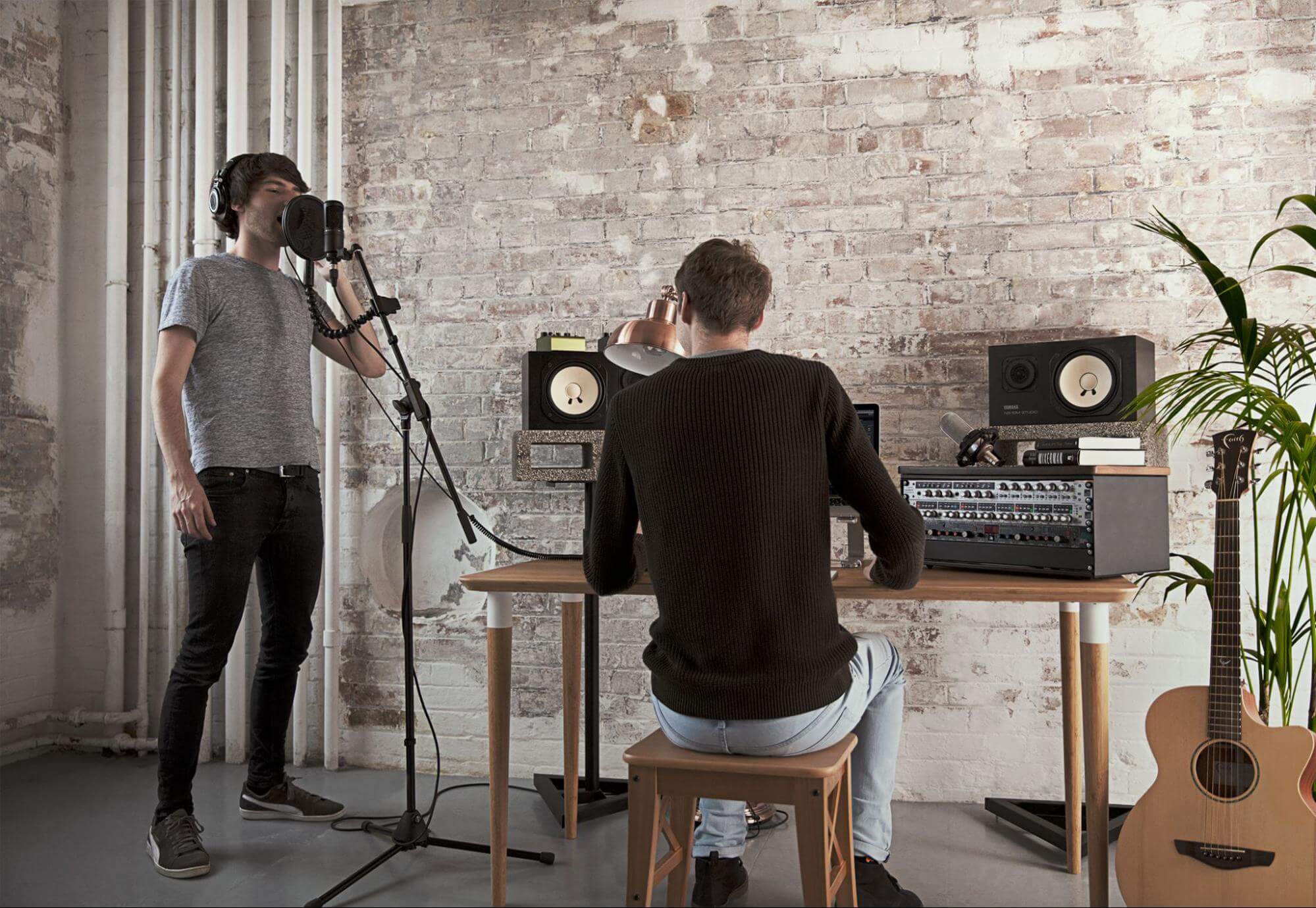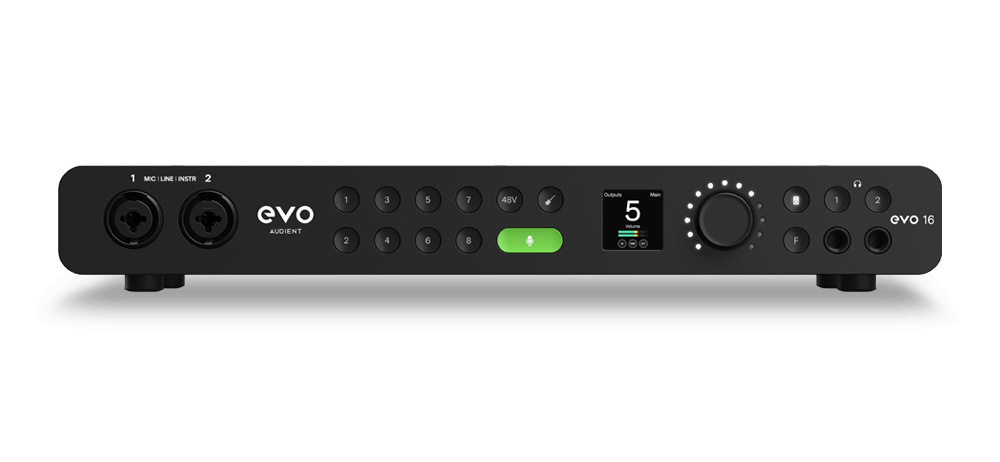What is a mic preamp expander?
A mic preamp expander is, as the name more than suggests, a breakout box that attaches to your audio interface to increase (ie, ‘expand’) the number of inputs and outputs available to you for recording and/or mixing. The technicalities might differ between expanders, but by and large, you can expect the same fundamental format and functionality across the board, with the main price-influencing differentials being the quality of the mic preamps and converters, and the variety of onboard controls.
Generally speaking, you’ll be looking at a 1U rack-mount or desktop box with the majority of inputs and/or outputs on the back, plus a couple of readily accessible inputs and all controls (gain, phantom power, etc) on the front. You’ll get a minimum of eight analogue inputs and eight analogue outputs, and typically, connection to the host audio interface will be made over ADAT via TOSlink ports.

The analogue inputs will likely be combi XLR/quarter-inch jacks, serving as both mic and line-ins, just like those on your audio interface, and those on the front panel will also accept instrument-level signals, making it easy to plug in a guitar or two without having to crawl around behind your rack. If analogue line outputs are present, they might be built directly into the back panel, but often come in the form of a DB25 connector and breakout cable loom.
Why do I need an expander?
The main reason for investing in a mic preamp expander is to increase the number of analogue inputs at your disposal. Perhaps you’re looking to record a full band, orchestra, choir or other sizeable setup, or just a large drum kit with spot mics on every drum, as well as overheads and room mics. Clearly, the small number of inputs found on a typical audio interface won’t be able to cater to that many sources, but adding an expander makes it possible to keep every signal on its own discrete channel for multitrack recording, rather than having to use a mixer before the interface to sub-mix everything down to manageable groups.
As for the analogue outputs, those can be fed directly from their corresponding inputs to deploy the expander as a standalone multichannel mic preamp. Some expanders will also include ADAT inputs, which you can use to expand your audio interface’s output count, just like it gives you more input channels. You can use this to feed audio from your DAW out to hardware effects or mixers.

How do they work?
Adding an expander to your audio interface couldn’t be easier: connect the expander’s ADAT Out to the interface’s ADAT In to add the expander’s inputs to those of the interface, and/or, if output expansion is required and your expander includes ADAT input, connect the interface’s ADAT Out to the expander’s ADAT In. All those extra inputs (and/or outputs) are simply presented in the DAW as additions to those provided by the audio interface, with configuration handled automatically by the driver, and no manual configuration or setup required apart from perhaps specifying the master clock source in a software control panel.
Further connectivity might be onboard in the shape of S/PDIF and AES connectors; and if you crave yet more inputs and your audio interface features two ADAT Ins (the Audient iD44, for example), you can always add a second expander. Now, that’s a lot of channels! (Please note that you would need to use a BNC word clock cable if using multiple expanders to keep all your devices synced up!)
Which Audient mic preamp expander is right for me?
Audient’s line of expanders offers a variety of specifications and features, and choosing between them will come down to your particular technical needs, working style and, of course, budget.
The eminently affordable EVO SP8 houses six analogue mic/line inputs and two front-panel mic/line/instrument inputs with super clean EVO Mic Preamps, as well as eight line outputs and two sets of ADAT I/O. You can connect two EVO SP8‘s up to a single EVO 16 – a configuration we call the ‘EVO Expanded System’ – you’ve got a full 24 channels of pristine quality analogue I/O! Beyond that, the innovative Smartgain function sets optimum input levels for you (across a single SP8 or the whole EVO Expanded System) at quite literally the press of a button, and the single-knob Motion UI control interface makes navigation quick and easy.
While the EVO SP8 emphasizes operational simplicity, speedy workflow and impressive expandability, the Audient ASP800 and ASP880 boast the same Audient Console preamps found on our flagship ASP8024 large format console, and adhere to a more ‘traditional’ studio workflow, with all per-channel knobs and buttons laid out on their front panels for immediate access.

Both also feature discrete JFET instrument inputs alongside their eight mic/line inputs, eight analogue outputs on DB25 connectors (for deployment as standalone multichannel mic pres), and phantom power and Pad buttons on every channel. The ASP880 also provides sweepable high-pass filters and polarity switching on all eight analogue channels, and integrates eight direct-to-ADC line inputs for use as outboard inserts or standalone analogue-to-digital conversion; while the ASP800 sets itself apart sonically with its two Retro channels, each one independently dialling in saturation and warmth via the HMX and IRON harmonic distortion circuits.
Finally, we should make clear that all three of our mic preamp expanders work with any ADAT-equipped audio interface, not just those in the Audient and EVO ranges. No matter what your primary interface is, when you need to scale your analogue I/O up for those bigger recording sessions, the EVO SP8, Audient ASP800 and Audient ASP880 deliver exceptional quality across a range of price points.
Our Products
-

Interfaz de audio 2 entradas | 2 salidas
-

Interfaz de audio 10 entradas | 6 salidas
-

10in | 14out Audio Interface
-

Interfaz de audio 20 entradas | 24 salidas
-

24in | 32out Audio Interface
-

Interfaz de audio 10 entradas | 14 salidas
-

Interfaz de audio 10 entradas | 4 salidas
-

Interfaz de audio 2 entradas | 2 salidas
-

Interfaz de audio 4 entradas | 4 salidas
-

24in | 24out Audio Interface
-

Todo lo que necesitas para empezar a grabar
-

8 Channel Smart Preamp with AD/DA
-

Previo de micro y ADC de 8 canales
-

Previo de micro y control de tono de 8 canales
-

Consola de grabación analógica modular
-

Small Format Analogue Recording Console
-

Small Format Analogue Recording Console
-

Immersive Audio Interface and Monitor Controller
-

Controlador de sobremesa para monitores
-

Controlador de monitores de sonido surround



